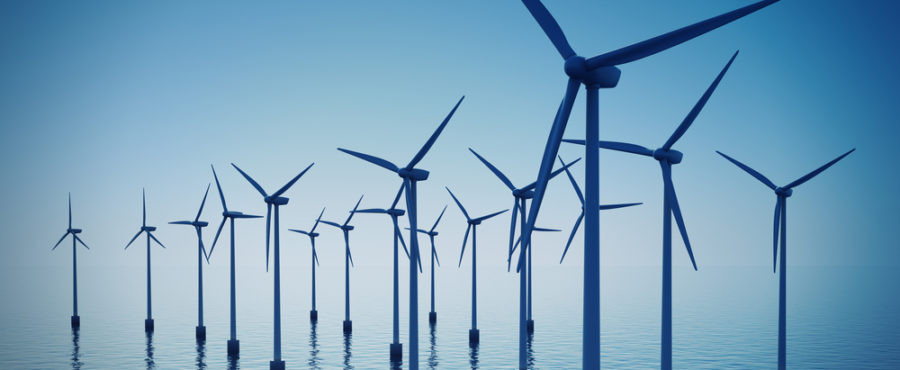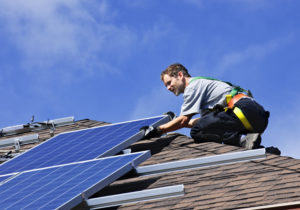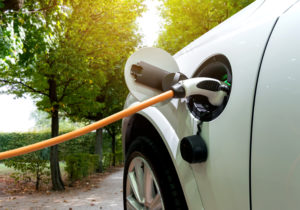
Offshore wind farms are one of the most dynamically developed sectors of renewable energy. They are not, however, free from certain constraints, one being the depth of the waters where the sea turbines are going to be installed.
Offshore turbines do not arouse such emotions and social protests as onshore wind farms. Offshore turbines obviously do not disturb people who live nearby as simply there are no people who live nearby. The only objections might be that they can be seen from the coast and somehow affect the landscape. Traditional offshore turbines are erected on solid foundations, so the water cannot be too deep because the construction complexity and, consequently, the costs are growing extremely fast then. Appropriate spots in shallow areas are becoming scarcer and scarcer; this is clearly the case in the North Sea or western Baltic, where wind farm density is fairly high.
Many countries and regions would like to have offshore wind parks in their territories, but the seabed is too steep to erect windfarms there, at an appropriate distance from the coast. This is the problem of, for instance, the Iberian Peninsula, significant parts of the French or Scottish coastlines, and the whole Western coast of the USA. This problem may be solved by placing the turbine on a floating platform, which may be anchored in deep waters without having to construct traditional foundations.
According to some estimates, once the technology of floating platforms is fully developed and deployed, the floating platform-based parks erected by 2030 may even reach the power of 13 gigawatts[1]. For comparison, Europe’s largest coal-based block in Kozienice, Poland, generates slightly above 1 GW of power.
Scottish pioneers
Scotland is a pioneer in the floating wind farm sector. The first project of this type, the Hywind farm, is situated 25 kilometres from the coast of Scotland, where the waters are as deep as 130 metres. At the same time, average wind speed here reaches 10 metres per second[2]. Hywind’s power is sufficient for satisfying the demand of 20 thousand households.
Though the Scots were the very first to develop floating wind farms, also the Norwegians contributed to the development of floating offshore wind turbines. The Hywind project’s key investor is the Equinor energy corporation (formerly known as Statoil), which has been working to develop floating wind parks for 15 years now. The Norwegians own 75 per cent of shares in the project, with the remaining 25 per cent belonging to the United Arab Emirates’ Masdar investment fund[3].
According to Equinor’s estimates about 80 per cent of potential locations of offshore farms are in places that are at least 60 metres deep, which makes deployment of traditional wind turbines there unreasonably costly. Today, the limit of cost-effectiveness is 50 metres.
Portugal walking the path of Scotland
Another windfarm is going to be erected at the coast of Portugal and this will be a genuinely international project. The construction process is to be carried out by a syndicate of Portuguese EDP Renewables, British Chiyoda Generating Europe and Diamond Generating Europe, owned to Mitsubishi. Another entity also involved in the process is Trustwind – a joint venture of French Engie and Japanese Marubeni. Spanish Repsol is also going to invest in this project.
According to the syndicate representatives the biggest portion of the project’s cost is the deployment of an over 17-km long cable connecting the farm with the coast. The cost of the 25 megawatt windfarm alone has been estimated at 115 million euros[4].
[1] https://www.reuters.com/article/us-norway-renewables-windpower/norway-to-discuss-construction-of-its-first-floating-wind-farms-next-week-idUSKBN1JB1CZ
[2] http://gramwzielone.pl/energia-wiatrowa/28562/uruchomiono-pierwsza-plywajaca-farme-wiatrowa
[3] http://gramwzielone.pl/energia-wiatrowa/28562/uruchomiono-pierwsza-plywajaca-farme-wiatrowa
[4] http://gramwzielone.pl/energia-wiatrowa/29225/druga-plywajaca-farma-wiatrowa-na-morzu-w-2018-r




